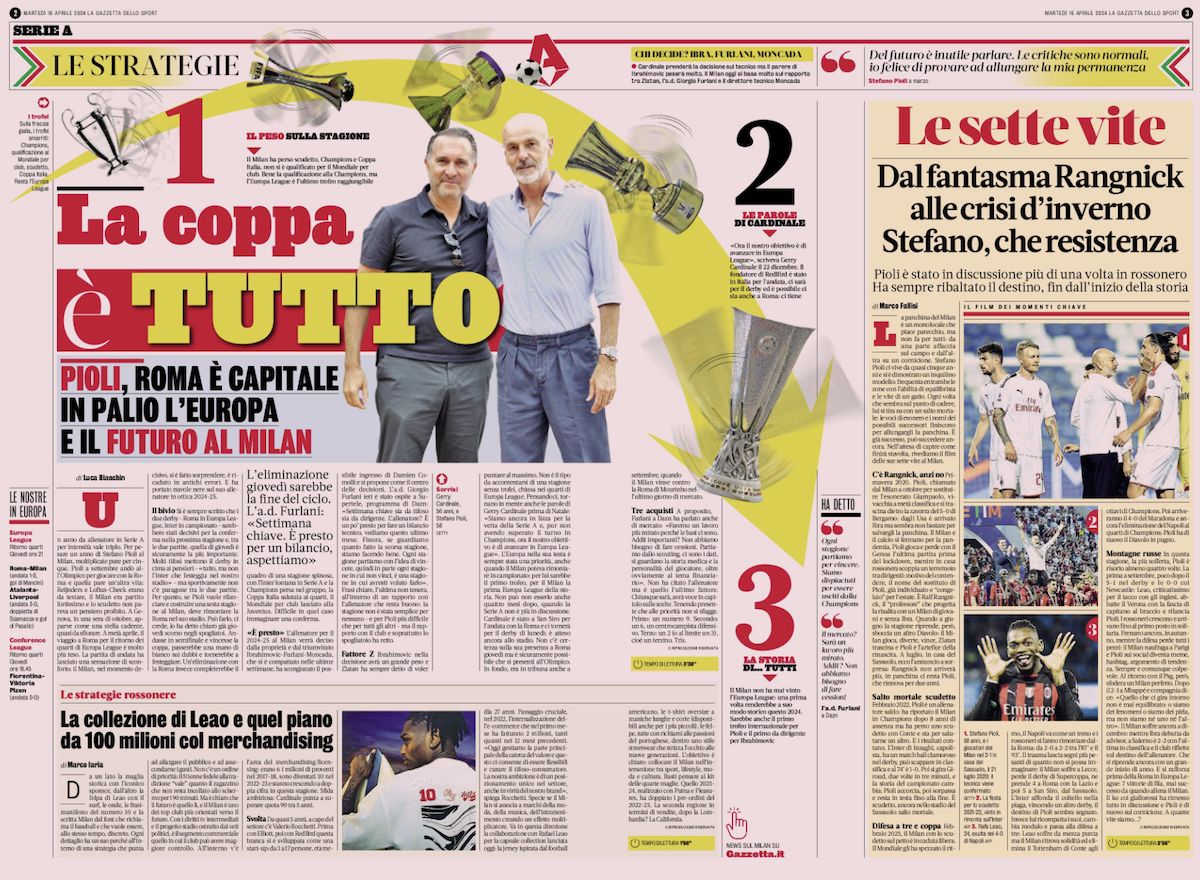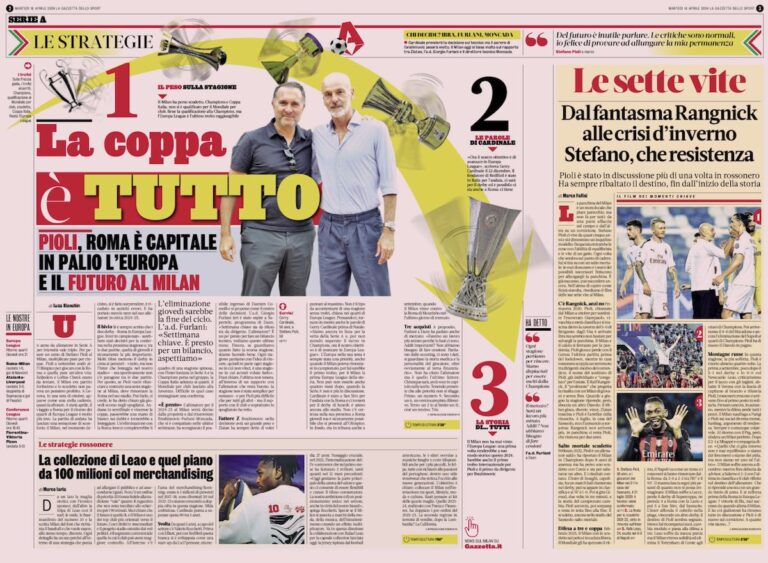AC Milan's commercial income has increased significantly since the advent of American ownership, but there are plans to further increase income and make it more balanced in certain areas.
This morning on La Gazzetta dello Sport, we talk about the different areas of merchandising in Milan. Of course, there are historic shirts with iconic sponsors, but there's also the new Rafael Leo Surfing Wave sweatshirt and fashion shirts with baseball-inspired fonts.
Every item Milan releases has its own reason, within a strategy aimed at expanding its customer base, gaining new fans and even casual supporters and satisfying their tastes.
There are no priorities. A nostalgic, traditionalist 50-year-old is just as “worthy” as a kid who can't keep his eyes glued to the screen for 90 minutes of a game. But it's clear that the future is there, and Milan are one of the most forward-looking top clubs.
In Jerry Cardinale's project, competitiveness must go hand in hand with sustainability, and sustainability at a higher level (i.e. the ability to generate more cash than you currently have and therefore earn more stars) ability to do so) cannot ignore the increase in revenue.
It is in the commercial sphere where clubs can gain greater control, as television rights are brokered by UEFA and the league, and stadium plans are blocked by political vetoes. It is a sector whose turnover is already expected to increase by up to 127 million euros in 2022-2023.
That includes the area of merchandising/licensing, or selling products. With Yonghong Li and his amazing commercial plans to conquer Asia, his revenue in 2017-18 was his 6 million euros. That will increase to 30 million euros in the 2022-23 season, a double-digit increase this season.
The challenge is ambitious, with Cardinale aiming to raise more than 90 million euros in five years. Casa Milano is considered American in origin, with a figure of $100 million in circulation.
Startup consisting of 17 people
For almost five years, Valerio Rocchetti (Director of Retail, Licensing and E-Commerce in Milan) has been heading the division.
First with Elliott and then with Redbird, this branch of the company developed like a start-up. The number of employees ranges from 3 to 17, with an average age of 27, with experience ranging from fashion to large-scale retail transactions, mostly outside of football.
It's a fresh, innovative perspective that strays a little from the old patterns of corporate structure. An important step in 2022 will be the internalization of e-commerce, and in his first month of activity he generated sales of 2 million euros, the same as in the previous 12 months.
“At present, Milan manages key parts of the value chain by outsourcing the lower value-added stages. This allows us to be flexible and give maximum consideration to our fan consumers,” Rocchetti said. explains.
“Currently, habits have changed: 50% of customers ordering in the province of Milan choose to buy online and pick up their goods in store. We have to be able to meet every need. yeah.”
The number of stores has also increased from 2 to 5 stores. A store has been added to the popular Malpensa Airport, and a sixth store in the center of Milan is scheduled to open in the coming months.
Last season's revenue was almost evenly distributed between the two sales channels (14 million euros online and 16 million euros in physical stores). In the future, the Rossoneri will increasingly focus on overseas markets and support the club's fans on a global scale. One idea is to open a franchise store.
Meanwhile, sales outside the country's borders are already stable, at 45% compared to 55% domestic sales. In contrast, other Italian teams are more imbalanced towards the domestic side.
No.10 partnership
The arrival of RedBird, with its sports business expertise, accelerated everything. Reference models from a merchandising point of view are Bayern Munich, Liverpool and Barcelona, with revenues of over 100 million euros.
“Our goal is to establish ourselves in this field, thanks in part to our brand,” adds Rocchetti. Especially when Milan brands are associated with other fashion, music and entertainment brands, synergies can be created and different audiences can be reached.
Partnerships with the New York Yankees, Off-White, New Era and Warner Bros. are also moving in this direction. And then there are the collaborations with players currently on the team who are building the brand that fans want to represent.
later Theo Hernandez “TH19” Collectionnow it's the turn of Rafael Leo, who developed the ACM x RL10 series, a capsule collection launched today with the club.
Jerseys inspired by the world of American football, oversized T-shirts with long and short sleeves (also available for young children), and classic sweatshirts all express the Portuguese passion for a streetwear style that appeals to young people. It's a clothing style. generation.
The purpose is clear. Our aim is to position Milan at the intersection of sports, lifestyle, fashion and culture, anchoring it as a fashion capital while also opening it up to globalization. The fourth kit was released as a limited edition and quickly sold out, demonstrating the “scarcity” marketing strategy.
The fourth shirt for the 2023-24 season, created in collaboration with PUMA and Los Angeles brand Pleasures, has doubled pre-orders from the previous year, with 60% of buyers in the 20-29 age group, and California in Lombardy. It ranked second overall as a region after the state.
The importance of control
There are other benefits to offering the market more than match shirts. First of all, it keeps the fan's attention high throughout the season (thanks to the fourth shirt, February sales exceeded Christmas sales).
Then there's the economic aspect. The match shirts are licensed to Puma, who will pass on royalties to Milan, meaning a direct product will generate more profit for the club.
Currently, 65% of our sales come from match kits and the remaining 35% from match kits, with a total of more than 500,000 units sold annually. The goal is to reach 50%-50%.
Of course, the new stadium will also be a driving force for merchandise sales. Milan currently collect around €3 million a year from San Siro sales. The management has made the following predictions: Once the new home is built, merchandise sales related to the stadium will increase fivefold, thus generating a profit of at least 15 million euros.



